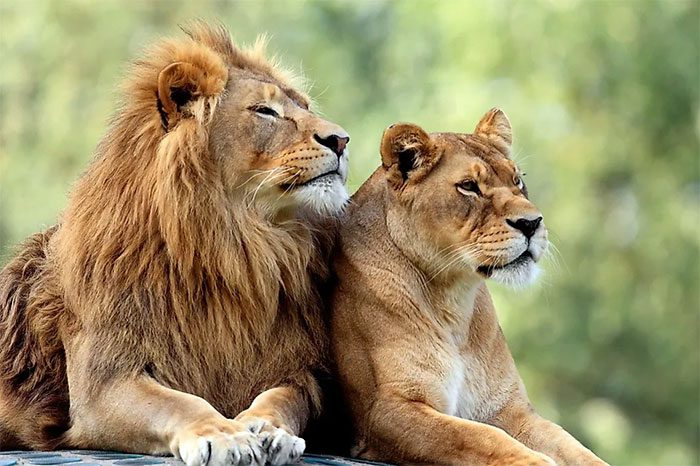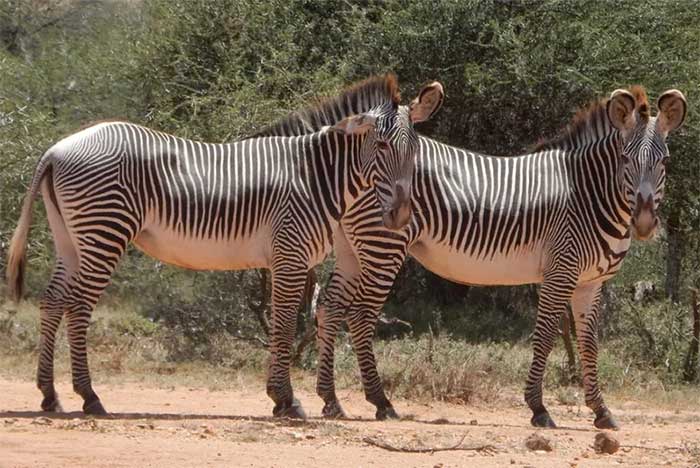By observing 429 species of mammals across various orders, the research team discovered a surprising result.
The image of a male lion and a female lion walking side by side may lead you to immediately draw conclusions about the differences between males and females in nature.

Male lions are larger than female lions. (Photo: Getty).
Accordingly, males tend to be larger, stronger, and more aggressive as they take on critical roles in maintaining the species and protecting individuals within the pride.
In his famous book “The Descent of Man“, Charles Darwin confidently stated that male mammals are generally larger than females. Initially, this theory—known as sexual size dimorphism (SSD)—seemed entirely reasonable.
However, research based on over 400 species of mammals has shown a surprising result. It turns out that males are not always larger than females, as commonly assumed.
Specifically, the research findings reveal that only 45.1% of species have males larger than females, which is less than half of the total. Meanwhile, 38.7% of mammal species exhibit similar sizes between males and females, and 16.2% have females larger than males.
For example, the size difference between male and female individuals is evident in the tube-nosed bat (scientific name: Murina peninsularis), where females weigh 1.4 times more than males. In contrast, the northern elephant seal (scientific name: Mirounga angustirostris) has males that weigh 3.2 times more than females.

Zebras show no sexual dimorphism between males and females. They are the same size. (Photo: Getty).
However, most sexual dimorphism does not manifest in such extreme ways. The research team found that half of the species in the order Rodentia (the order with the largest number of species in this study) have males and females of similar sizes.
Overall, researchers discovered that these findings debunk the inherent belief that most male mammals are larger than females. Even when sexual dimorphism occurs, males tend to be larger, but not to a significantly different extent.
One hypothesis proposed by the researchers is that in some species, males need to dominate to attract mates, leading to their development in size. However, in some species, females play a more crucial role and express this in terms of size.





















































